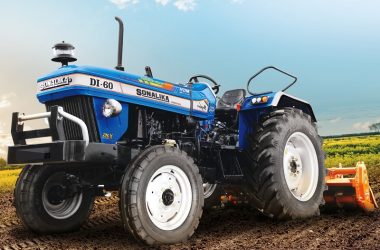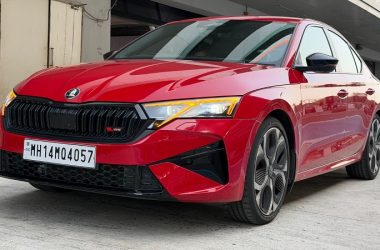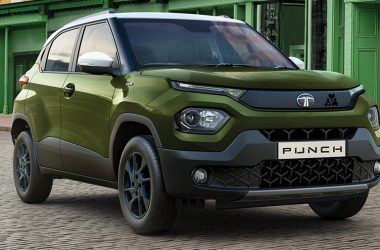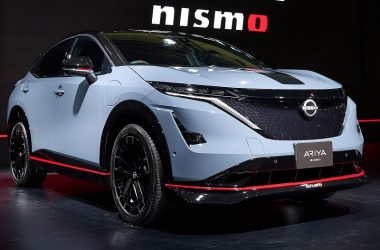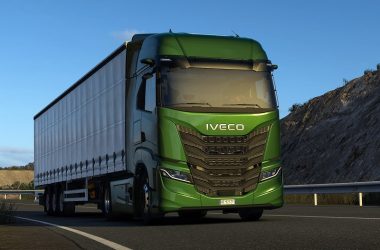In the world of high-performance automobiles, few names evoke as much passion and prestige as Ferrari. Today, the legendary marque from Maranello has once again raised the bar for supercars with the unveiling of its newest creation—the Ferrari F80. This limited-edition hypercar, of which only 799 examples will be produced, is a culmination of cutting-edge technology, relentless innovation, and Ferrari’s enduring motorsport legacy. With an astonishing 1,200 horsepower and an array of state-of-the-art systems, the F80 is a true masterpiece, designed to push the boundaries of what’s possible in automotive engineering. It is priced at $4 million (INR 33.62 crore).
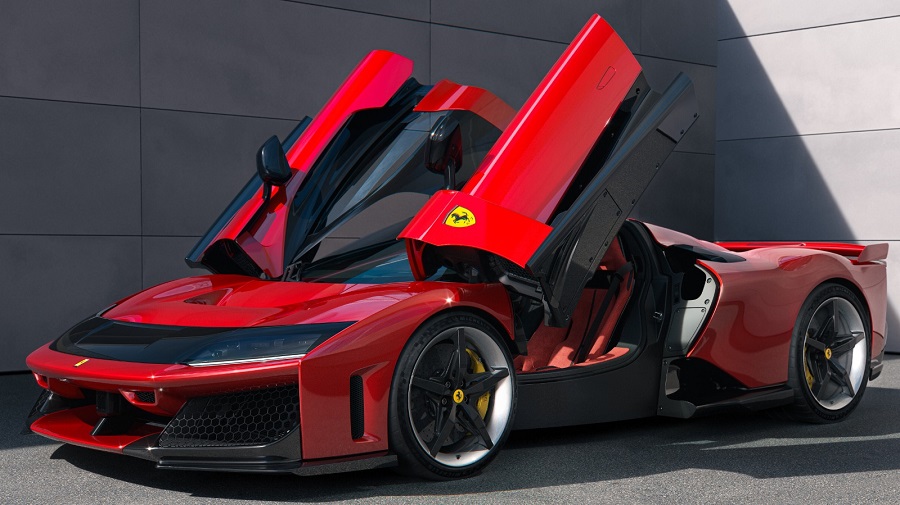
A New Benchmark in Performance
Ferrari’s supercar pedigree stretches back decades, with iconic models like the 1984 GTO, the F40, and the LaFerrari. Each of these vehicles was a trailblazer in its own right, and the F80 is set to join this elite group. However, this time Ferrari has crafted a car that not only showcases exceptional performance but also represents the pinnacle of internal combustion and hybrid powertrain technology.
At the heart of the F80 is a revolutionary V6-hybrid powertrain. The internal combustion engine, a 3.0-liter 120° V6, delivers a staggering 900 horsepower, making it the most powerful six-cylinder engine Ferrari has ever built. But it doesn’t stop there—the hybrid system, consisting of an electric motor on the front axle and a rear motor (MGU-K), adds another 300 horsepower. The result? A total output of 1,200 horsepower, making the F80 the most potent road car Ferrari has ever produced.
The F80 can launch from 0 to 100 km/h in a blistering 2.15 seconds, and its top speed is a mind-bending 350 km/h. Despite these jaw-dropping figures, Ferrari has ensured that the F80 remains a car that can be driven with relative ease on the road, thanks to advanced suspension systems, electronic controls, and a focus on usability that doesn’t compromise its extreme track-focused performance.
Cutting-Edge Aerodynamics and Design
The F80 isn’t just about raw power. Its design has been meticulously crafted to maximize aerodynamics while maintaining Ferrari’s signature aesthetic. From the active rear wing and front triplane wing to the flat underbody and S-Duct, every inch of the car is designed to create as much downforce as possible. At 250 km/h, the F80 generates 1,000 kg of downforce, ensuring incredible stability at high speeds.
The car’s aerodynamic innovations extend to the chassis, which includes carbon-fiber elements and advanced materials developed through Ferrari’s extensive experience in motorsports. Notably, the body design draws inspiration from Ferrari’s participation in the World Endurance Championship (WEC) and Formula 1, with aggressive, futuristic lines that resemble an aircraft more than a traditional car.
The rear diffuser and active suspension contribute directly to the vehicle’s ground effect, working harmoniously with Ferrari’s most advanced electronic vehicle control systems. These elements allow the F80 to maintain optimum performance, regardless of whether it’s on a winding road or the open track.
Advanced Hybrid Powertrain
One of the most groundbreaking features of the F80 is its hybrid powertrain. Ferrari’s engineers have integrated cutting-edge hybrid technology directly from their Formula 1 and endurance racing programs. This isn’t just a hybrid in the conventional sense—it’s a finely tuned system that includes electric turbo technology (e-turbo) and a highly advanced battery management system.
The electric front axle not only delivers additional power but also allows for precise torque vectoring, enabling the F80 to maintain exceptional cornering ability even under extreme acceleration. The e-turbos ensure that turbo lag is a thing of the past, offering instantaneous throttle response at any speed, while the electric motors are designed to maximize both performance and efficiency, utilizing energy recovery systems that recharge the battery during deceleration.
In essence, the F80’s powertrain is the perfect marriage of Ferrari’s combustion engine heritage and the future of electric performance.
Unparalleled Driving Experience
The Ferrari F80 isn’t just a machine for setting track records—it’s also designed to offer a superior driving experience. The car features a “1+” cabin layout, where the focus is entirely on the driver while still providing enough space and comfort for a passenger. The minimalist interior, inspired by single-seater racing cars, ensures that the driver remains at the heart of the action, with all controls ergonomically arranged around them.
Ferrari has also developed an advanced suite of electronic systems to manage the F80’s immense power and ensure that it remains controllable even under the most demanding conditions. The car’s Side Slip Control system, now in its 9th iteration, allows drivers to push the vehicle to its limits while maintaining confidence in its handling. Moreover, a newly developed “Boost Optimization” feature provides an extra surge of power precisely when needed, learning the layout of a track and delivering maximum performance on each lap.
A Legacy of Excellence
Ferrari’s engineers have spared no expense or effort in ensuring that the F80 represents the very best of what the brand has to offer. From the lightweight materials used in the chassis and bodywork to the industry-leading hybrid powertrain, the F80 is a celebration of everything that makes Ferrari one of the most revered names in automotive history.
In terms of aesthetics, the F80 ushers in a new design language for Ferrari, combining race-car aggression with an elegance that is unmistakably Ferrari. Its bold, aerospace-inspired form is punctuated by innovative touches, such as the louvred engine compartment spine and the distinctive NACA duct integrated into the bodywork.
As Ferrari celebrates this new era of supercars, the F80 stands as a testament to the brand’s relentless pursuit of performance and innovation. With its limited production run and status as Ferrari’s most advanced road car to date, the F80 is destined to be a legend in the making, ensuring that Ferrari’s legacy as a creator of dream machines endures for generations to come.
SPECS-
ENGINE
INTERNAL COMBUSTION ENGINE (ICE)
Type V6 – 120° – dry sump
Total displacement 2992 cc
Bore and stroke 88 mm × 82 mm
Maximum power 900 cv at 8750 rpm
Maximum torque 850 Nm at 5550 rpm
Maximum engine speed 9000 rpm (dynamic limiter at 9200 rpm)
Compression ratio 9.5:1
Specific power output 300 cv/l
HYBRID POWERTRAIN
Type Concentrated winding stator, Litz wire and stator and rotor in a Halbach array configuration
REAR ELECTRIC MOTOR (MGU-K)
Operating voltage 650 – 860 V
Peak power Regenerative braking: 70 kW (95 cv); ICE assist: 60 kW (81 cv)
Peak torque 45 Nm
Maximum engine speed 30,000 rpm
Weight 8.8 kg
FRONT AXLE ELECTRIC MOTOR
Operating voltage 650 – 860 V
Peak power 105 kW (142 cv) for each of the two electric motors
Peak torque 121 Nm
Maximum engine speed 30,000 rpm
Weight 12.9 kg
HIGH-VOLTAGE BATTERY
Maximum voltage 860 V
Maximum power (charge/discharge) 242 kW
Energy 2.28 kWh
Maximum current 350 A
Power density 6.16 kW/kg
Weight 39.3 kg
WEIGHTS AND DIMENSIONS
Length 4840 mm
Width 2060 mm
Height (in kerb weight conditions) 1138 mm
Wheelbase 2665 mm
Front track 1701 mm
Rear track 1660 mm
Dry weight* 1525 kg
Dry weight/power ratio 1.27 kg/cv
Weight distribution 42.2% front / 57.8% rear
Fuel tank capacity 63.5 litres
Luggage compartment capacity 35 litres
TYRES AND WHEELS
Front 285/30 R20
Rear 345/30 R21
BRAKES
Front 408 x 220 x 38 mm (6 pistons per calliper)
Rear 390 x 263 x 32 mm (4 pistons per calliper)
TRANSMISSION AND GEARBOX
8-speed dual-clutch F1 DCT
ELECTRONIC CONTROLS
SSC 8.0: TC, eDiff, SCM, PCV 3.0, FDE 2.0, EPS, ABS-Evo in all Manettino modes, 6D sensor
performance ABS/ABD
PERFORMANCE
Maximum speed 350 km/h
0–100 km/h 2.15 s
0–200 km/h 5.75 s
100-0 km/h 28 m
200-0 km/h 98 m
FUEL CONSUMPTION
Under homologation
CO2 EMISSIONS
Under homologation
